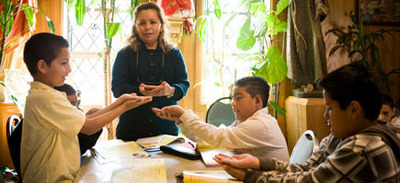Over at the Los Angeles Times, Charlotte Allen takes note of one particular way of describing priests that smacks of anti-Catholicism:
“Men in dresses.” That’s who columnist Maureen Dowd blames for decay in “our religious kingdom.”
Which men in dresses is she referring too? The ballerinas-in-drag of Les Ballets Trockadero? The Marilyn Monroe lookalikes marching in gay pride parades? Nope. She’s talking about Catholic priests.
Lately Dowd, along with half the other columnists in America, has been speculating about what Pope Benedict XVI knew or didn’t know concerning clerical abuse of minors back when he was Josef Ratzinger, acting as archbishop of Munich or as head of the Vatican’s Congregation for the Doctrine of the Faith. And she and her gang seem to find it hilarious that Catholic priests and bishops often wear cassocks or other long traditional robes, especially on formal religious occasions and when celebrating Mass.
It’s odd that no one ever uses the word “dresses” to describe the ankle-length liturgical garments worn by Episcopal priests. Nor are Protestant ministers or Jewish rabbis derided as cross-dressers when they don long robes for religious services. Has anyone ever called the Dalai Lama “a man in a dress”? Or Genghis Khan? Not unless you wanted to see your ribcage sliced into salami by a scimitar.
For most of human history long robes on men — whether the togas of Roman senators, the kimonos of Japanese samurai or the black gowns worn by judges and academics today — have been associated with status, dignity and, in the case of the clergy, the sacral separation of religious ritual from the ordinary activities of daily life. Indeed, so redolent of masculinity are those garments that when women enter the professions for which they are worn, they often soften and feminize them. Supreme Court Justice Ruth Bader Ginsburg, for example, wears lace collars with her judicial robes
Catholic priests alone are mocked as ecclesiastical Lypsinkas in the media and elsewhere when they dare to wear the traditional garb of their calling. There is a reason for that. The latest round of abuse allegations, only one of which can be said to have occurred on Ratzinger’s watch, aren’t really about supposed Vatican cover-ups of sexual exploitation of children by clerics. They are yet another effort to discredit the Roman Catholic Church wholesale by people whose beefs with Catholicism rest on entirely different grounds — namely that it forbids abortion and homosexual conduct, it doesn’t allow women to be priests, and it requires men who enter the priesthood to remain celibate.
There’s much more. Check it out.

